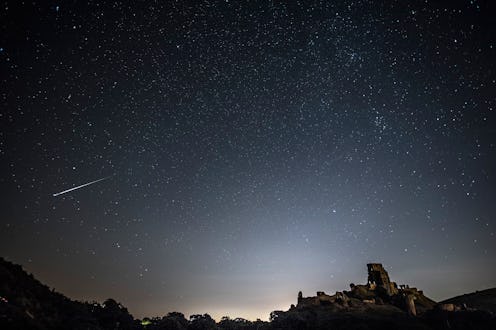
Get ready for the event of a lifetime, stargazers: A bright green “Christmas Comet” is passing incredibly close to Earth just in time for the holidays. It’s not officially called the “Christmas Comet,” of course; the comet’s actual name is 46P/Wirtanen. But given its timing, as well as its greenish color… well, it’s no wonder it’s earned a seasonally-inspired nickname. The best part is, you should be able to see it in the night sky right now (or, y’know, later tonight, if it’s still daylight for you right now) — and you might not even need a telescope to spot it. I’m saying it’s a Christmas miracle, but… it’s… kind of a Christmas miracle, isn’t it? At the very least, it’s a cool bit of science with some truly spectacular timing, so hoorah for hat.
Discovered on Jan. 17, 1948 by Carl Wirtanen (hence the comet’s name) at the Lick Observatory just south of San Jose, Calif., 46P/Wirtanen currently has an orbital period of about five and a half years. The last time it passed by us was in 2013; its apparition wasn’t great then, though, which will also be true for its 2024 apparition. But 2018’s apparition will be quite good; indeed, passing at a distance of within 7.1 million miles, it will be the closest the comet has come to Earth in centuries, according to Space.com.
And there’s even more to be impressed by than that, too: The Jet Propulsion Laboratory (JPL) in Pasadena, Calif. noted in a press release that 46P/Wirtanen’s flyby will be one of the 10 closet comet flybys the Earth has seen in 70 years. “This could be one of the brightest comets in years, offering astronomers an important opportunity to study a comet up close with ground-based telescopes, both optical and radar,” said Paul Choda, manager of NASA’s Center for Near-Earth Object Studies at JPL.
According to NASA, the comet’s appearance in December this year is unusually bright — so bright that you might be able to see it with the naked eye. It was actually at its brightest on Sunday, Dec. 16, but as the New York Times observes, it will remain just as visible for another week or two. Dr. Tony Farnham, an astronomy researcher at the University of Maryland, told the Times that viewers should be able to “find it a few days later without it being too much different.” You might be more likely to need binoculars or a telescope after that, but you should be able to find it throughout the rest of the month.
However, as meteorologist Joe Rao notes at Sky and Telescope, it’s still possible that spotting 46P/Wirtanen might be tough for the average stargazer. According to Rao, whether you’re able to see the comet will “strongly depend on your observing site,” with locations susceptible to light pollution having a particularly difficult time. Additionally, the comet is likely to appear “diffuse… almost ghostly,” which could make it hard to pick out among all the other objects and lights up in the sky. As such, you might want to temper your expectations a bit.
But that doesn't mean you absolutely won't see it; indeed, as the photographs currently making the rounds on social media show, lots of folk have been having terrific luck spotting the comet. Your best bet at seeing 46P/Wirtanen will be to head to an area with low light pollution and lots of visibility at night sometime in the next few days. Then, use this chart from Sky and Telescope to figure out which constellations the comet will be near on the specific date you’re viewing it. Bring a telescope or binoculars if you have access to either device — and look up.
Or, alternatively, you can check out a livestream of the comet’s flyby online. The Virtual Telescope Project has one scheduled for Dec. 18. That works, too.
Happy stargazing!